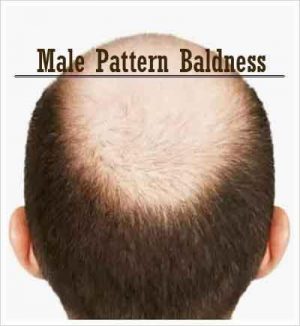- Home
- Editorial
- News
- Practice Guidelines
- Anesthesiology Guidelines
- Cancer Guidelines
- Cardiac Sciences Guidelines
- Critical Care Guidelines
- Dentistry Guidelines
- Dermatology Guidelines
- Diabetes and Endo Guidelines
- Diagnostics Guidelines
- ENT Guidelines
- Featured Practice Guidelines
- Gastroenterology Guidelines
- Geriatrics Guidelines
- Medicine Guidelines
- Nephrology Guidelines
- Neurosciences Guidelines
- Obs and Gynae Guidelines
- Ophthalmology Guidelines
- Orthopaedics Guidelines
- Paediatrics Guidelines
- Psychiatry Guidelines
- Pulmonology Guidelines
- Radiology Guidelines
- Surgery Guidelines
- Urology Guidelines
Scientists develop noninvasive electric technology to help reverse baldness

Baldness typically refers to excessive hair loss from scalp and hereditary hair loss with age is the most common cause of baldness.At present patients who don’t want to go bald can treat hair loss using minoxidil lotion, finasteride pills or hair transplant surgery. But minoxidil doesn’t work for everyone, finasteride can reduce sex drive and fertility, and surgery is painful and expensive.
Kudos to engineers at the University of Wisconsin–Madison who have developed noninvasive, low-cost hair-growth-stimulating technology to reversing baldness. In future, it could be as easy as wearing a hat. The details of the research have been published in the journal ACS Nano.
“I think this will be a very practical solution to hair regeneration,” says Xudong Wang, a professor of materials science and engineering at UW–Madison.
Based on devices that gather energy from a body’s day-to-day motion, the hair-growth technology stimulates the skin with gentle, low-frequency electric pulses, which coax dormant follicles to reactivate hair production.
The devices don’t cause hair follicles to sprout anew in smooth skin. Instead, they reactivate hair-producing structures that have gone dormant. That means they could be used as an intervention for people in the early stages of pattern baldness, but they wouldn’t bestow cascading tresses to someone who has been as bald as a billiard ball for several years.
Because the devices are powered by the movement of the wearer, they don’t require a bulky battery pack or complicated electronics. In fact, they’re so low-profile that they could be discreetly worn underneath the crown of an everyday baseball cap.
Wang is a world expert in the design and creation of energy-harvesting devices. He has pioneered electric bandages that stimulate wound-healing and a weight-loss implant that uses gentle electricity to trick the stomach into feeling full.
The hair-growth technology is based on a similar premise: Small devices called nanogenerators passively gather energy from day-to-day movements and then transmit low-frequency pulses of electricity to the skin. That gentle electric stimulation causes dormant follicles to “wake up.”
“Electric stimulations can help many different body functions,” says Wang. “But before our work, there was no really good solution for low-profile devices that provide gentle but effective stimulations.”
Because the electric pulses are incredibly gentle and don’t penetrate any deeper than the very outermost layers of the scalp, the devices don’t seem to cause any unpleasant side effects. That’s a marked advantage over other baldness treatments, like the medicine Propecia, which carries risks of sexual dysfunction, depression, and anxiety.
What’s more, in side-by-side tests on hairless mice, the devices stimulated hair growth just as effectively as two different compounds found in baldness medicines.
“It’s a self-activated system, very simple and easy to use,” says Wang. “The energy is very low so it will cause minimal side effects.”
The researchers have patented the concept with the Wisconsin Alumni Research Foundation, and they hope to move forward with human testing soon.
For further reference log on to :
DOI: 10.1021/acsnano.9b03912

Disclaimer: This site is primarily intended for healthcare professionals. Any content/information on this website does not replace the advice of medical and/or health professionals and should not be construed as medical/diagnostic advice/endorsement or prescription. Use of this site is subject to our terms of use, privacy policy, advertisement policy. © 2020 Minerva Medical Treatment Pvt Ltd